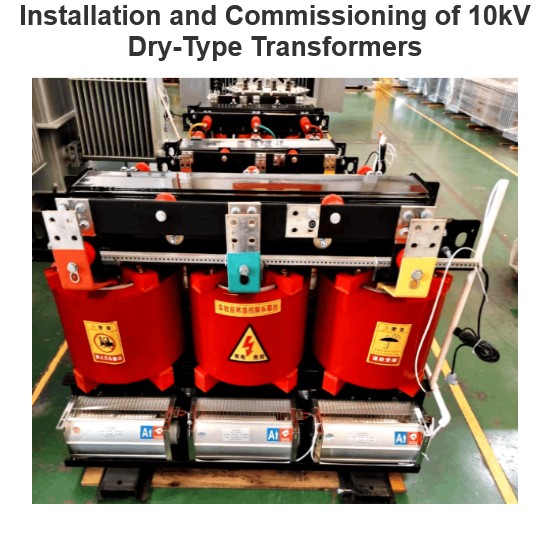Life Cycle Cost Analysis of Power Transformers Based on IEC Standards
Edwiin
02/25/2025
Life Cycle Cost Analysis of Power Transformers Based on IEC Standards
Core Framework Under IEC Standards
According to IEC 60300-3-3, the life cycle cost (LCC) of power transformers includes five stages:
- Initial Investment Costs: Procurement, installation, and commissioning (e.g., 20% of total LCC for a 220kV transformer).
- Operational Costs: Energy losses (60%-80% of LCC), maintenance, and inspections (e.g., annual savings of 2,600 kWh for a 1250kVA dry-type transformer).
- Decommissioning Costs: Residual value (5%-20% of initial investment) minus environmental disposal fees.
- Risk Costs: Outage losses and environmental penalties (calculated as fault frequency × repair time × unit loss cost).
- Environmental Externalities: Carbon emissions (e.g., 0.96 kg CO₂/kWh loss, totaling tens of thousands over a 40-year lifespan).
Key Cost Optimization Strategies
Efficiency & Material Innovation:
- PEI Value: IEC TS 60076-20 introduces the Peak Efficiency Index (PEI) to balance no-load/load losses.
- Aluminum Windings: Reduce costs by 23.5% compared to copper, with improved heat dissipation.
Operational Strategies:
- Load Rate Optimization: Economic load rates (60%-80%) minimize losses (e.g., 14.3万元 annual savings for a 220kV transformer).
- Demand-Side Response: Peak shaving reduces LCC by 12.5%.
- Digital Modeling: Integrate parameters like efficiency curves and failure rates for dynamic cost simulations.
Case Studies
Case 1 (220kV Transformer):
Option A (Standard): Initial cost = 8 million yuan, 40-year LCC = 34.766 million yuan.
Option B (High-Efficiency): Initial cost 10.4% higher, but total LCC reduced by 11.8% due to 4.096 million yuan in energy savings.
Case 2 (400kVA Amorphous Core Transformer):
Reduces carbon-linked LCC (CLCC) by 15.2% but increases failure rates by 20%.
Challenges & Recommendations
- Data Gaps: Incomplete failure rate statistics may skew models (e.g., 35% of LCC attributed to faults in 10kV transformers).
- Policy Alignment: Link energy efficiency standards to LCC (e.g., China’s GB 20052-2024 mandates efficiency upgrades).
- Future Trends: AI-driven decision tools and circular economy designs (e.g., modular structures improve residual value by 5%-10%).
Topics

In which directions will dry-type transformers develop in the future?
By Echo, 12 Years in the Electrical IndustryHi everyone, I'm Echo, and I've been working in the electrical industry for 12 years.From my early days doing commissioning and maintenance in distribution rooms, to later participating in electrical system design and equipment selection for large-scale projects, I’ve witnessed how dry-type transformers have evolved from traditional tools into smarter, greener devices.Recently, a new colleague asked me:“What’s the current state of dry
Echo
07/02/2025

Installation and Commissioning of 10kV Dry-Type Transformers
By James, 10 Years of Electrical Equipment Maintenance ExperienceHi everyone, I’m James, and I’ve been working in electrical equipment fault repair for 10 years.Over the past decade, I’ve worked in factories, substations, and distribution rooms of all sizes, involved in the installation, commissioning, maintenance, and troubleshooting of dry-type transformers. Dry-type transformers are among the most common electrical devices we deal with on a daily basis.Today, a new colleague
James
07/01/2025

What are the reasons for low insulation at the low-voltage side of a dry-type transformer?
Hi everyone, I’m Felix, and I’ve been working in electrical equipment fault repair for 15 years.Over these years, I’ve traveled across factories, substations, and distribution rooms all over the country, troubleshooting and repairing all kinds of electrical equipment. Dry-type transformers are among the most common devices we deal with.Today, a friend asked me:“What does it mean when the low-voltage side of a dry-type transformer has low insulation resistance?”Great
Felix Spark
07/01/2025

What tests are required for dry-type transformers?
1 Pre - commissioning InspectionAs a front - line tester, before formally commissioning a dry - type transformer, I need to carry out a comprehensive and systematic inspection. First, I conduct a visual inspection of the transformer body and its accessories, carefully checking for mechanical damage or deformation. Then, I check whether the leads of the high - and low - voltage windings are firmly connected and whether the bolt tightening torque meets the standard requirements (usually 40 - 60N&m
Oliver Watts
07/01/2025









